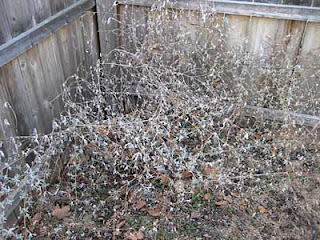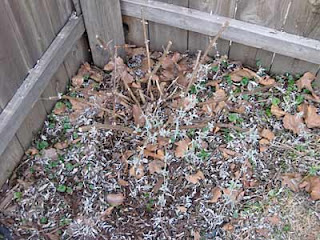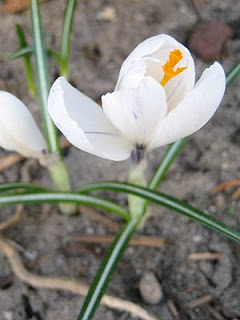This season, the Master Gardener Association for our area reinstated “Open Garden” visits. Members can spend an evening together while touring a peer’s garden. Carol DeVries’s garden was the first in a series of visits scheduled throughout the summer and contained a lower garden at the roadside, a small veggie patch, and both sun and shade perennial beds. The property is situated in a very rural area about a 20 minute drive from our city.
When approaching the drive, we were immediately greeted by a cast of colorful lilies.
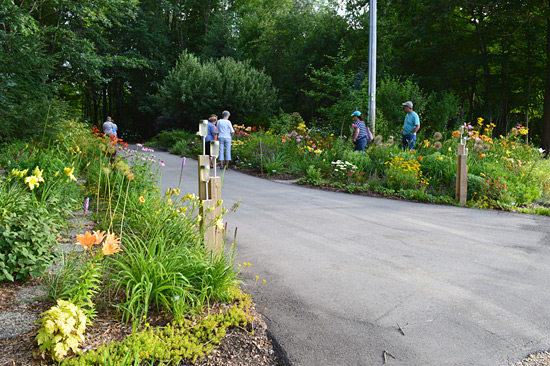
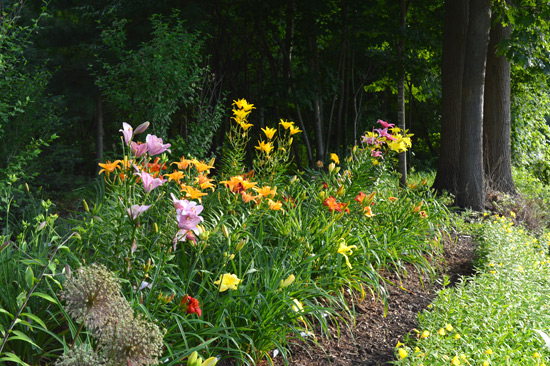
Some other perennials were mixed in as well. I like these daisies against the blue of the evergreen.
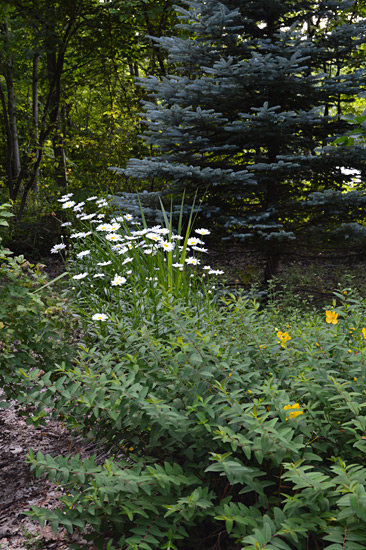
These lovely, hybrid coneflowers are Echinacea ‘Cleopatra.’ They were glowing with the early evening sunlight.
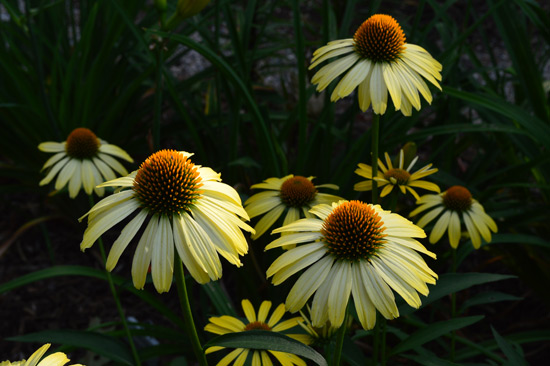
This plant is Stachys officinalis ‘Pink Cotton Candy.’ Whenever I see blooms atop thin stems in a dense planting, it seems to me the flowers are floating.
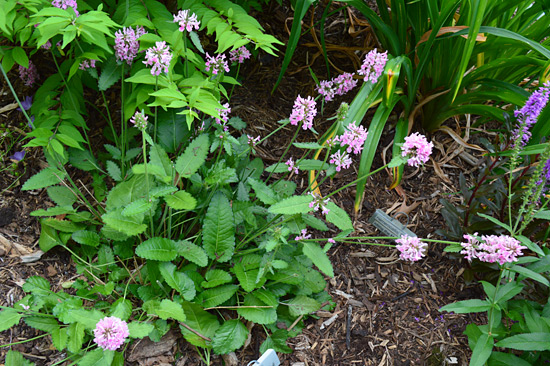
Here is a snapshot walking up the driveway from the lower garden to the home. Off to the left is an extensive shade garden while straight ahead are the full sun perennials.
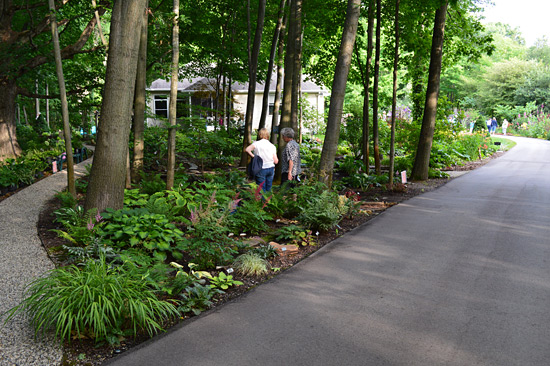
A gravel path curved through the left area of the shade garden while stepping stones bridged the space between the drive and walking path. The main mix of plants throughout this shade bed was a variety of ferns, hosta, and astilbe.
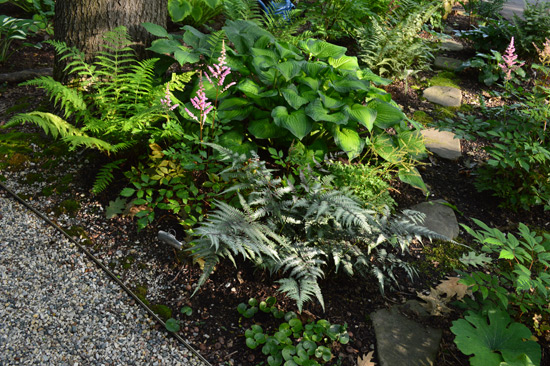
This Geranium ‘Sambor’ had uber cool foliage.
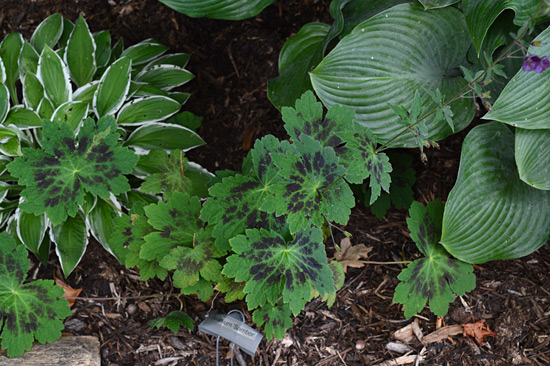
This is an overall shot of the full sun bed off to the right of the top of the driveway. The hollyhocks were a nice touch to give the bed some height.
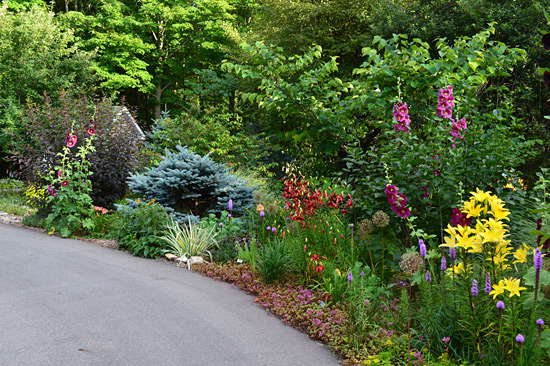
The color was fantastic. Look at the contrast of those yellow blooms and dark stems. I love how the fine texture of the grass in the background ties in with the fine-leaf foliage of the purple Liatris in front as well.

Here is a closer shot of the blood red, reach-for-the-sky hollyhock. I had given up growing hollyhock on the Lot because of weevils and rust. However, after seeing these I may give it another try next year.
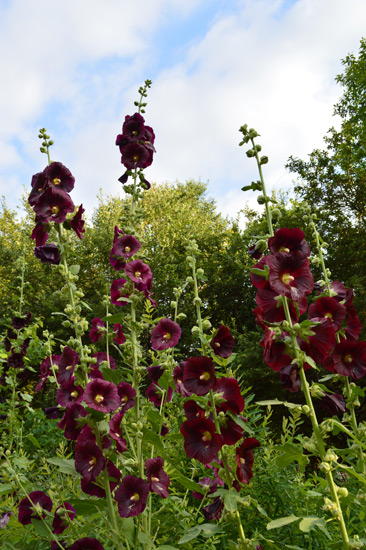
Here is another cuddly conifer, this one being a Pinus mugo ‘Mops.’
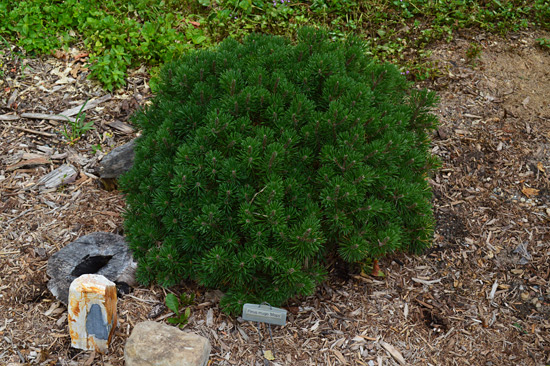
The garden then blended back into a shade environment as we passed behind the house.
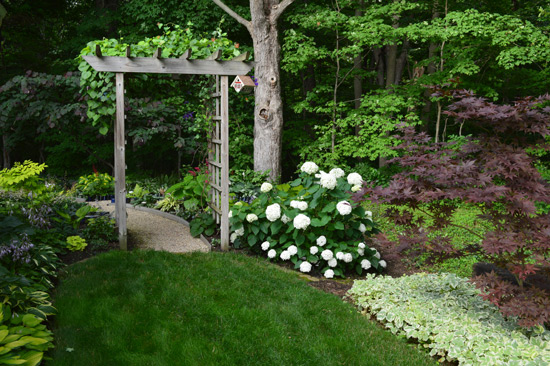
I took a lot of “photo notes” on how the different garden beds were edged. We have still to decide how to edge the beds on the Lot. This garden had a great combination of edging techniques, exemplifying all edging materials do not need to exactly match.
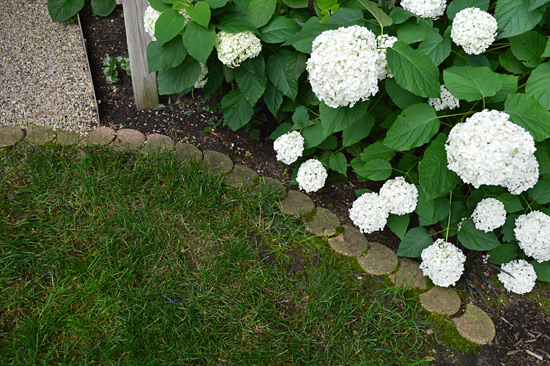
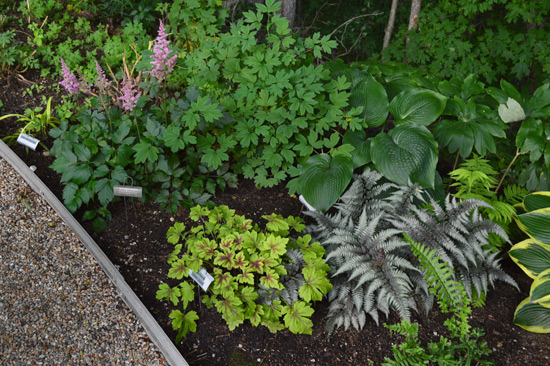
Here is a shot of a Heucheralla ‘Solar Eclipse.’ Variegation, silver, and chartreuse foliage all popped in the shade garden.
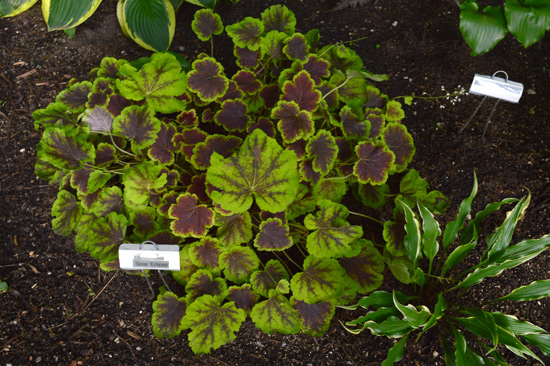
The blue glass here are upturned and buried wine bottles. Many jokes were made about volunteering to help the gardener empty more bottles if the need should ever arise.
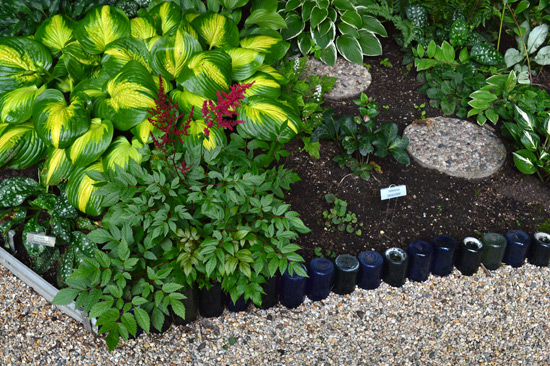
I really like this idea of a stepping stone path through a garden bed instead of an edged path. This technique was used several times throughout this garden. I think I’ll utilize it for the backyard garden on the Lot.
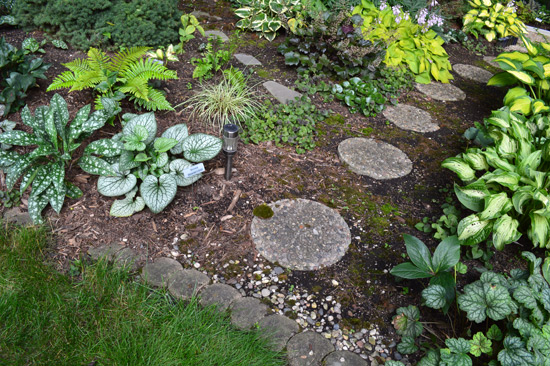
Here these stones are not only decorative, but offer a solid, raise edge for the mower wheel when the lawn is cut. Since it was designed this way, there is no need to go around raised edging and trim with the weed whacker.
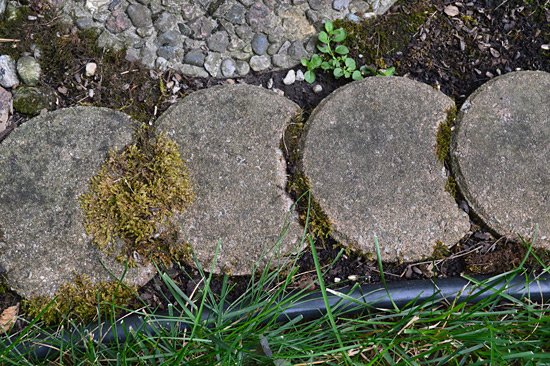
Here is a macro shot of the garden bed with those stepping stones from above.
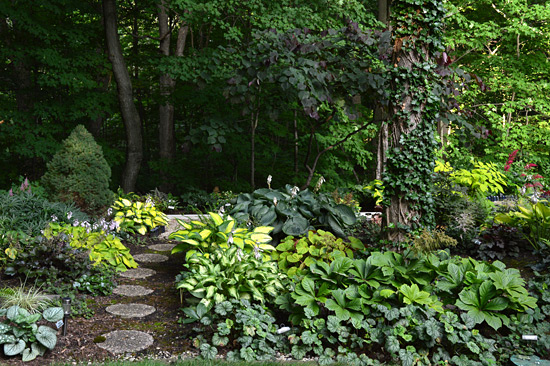
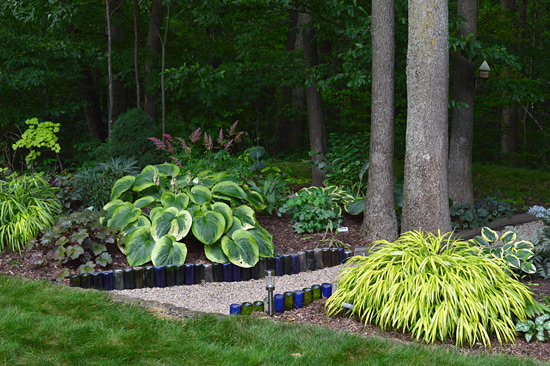
This little corner was nestled beside and in a shady nook of the house.
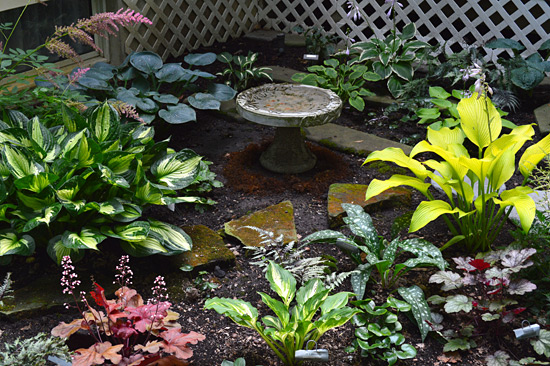
And then I saw this fern. Oh my goodness it was cool. The fronds looked like they had tassels.
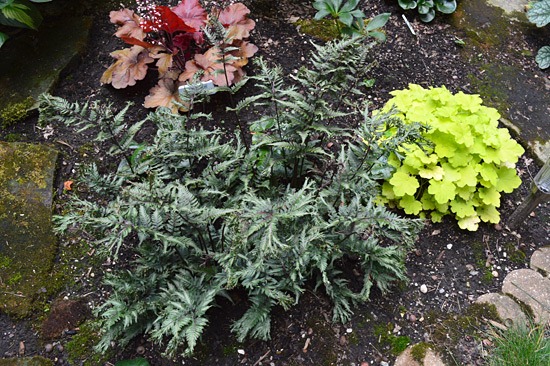
Here’s a closer shot. How cool is that?! I am kicking myself now because I did not get the name of the fern from the gardener.
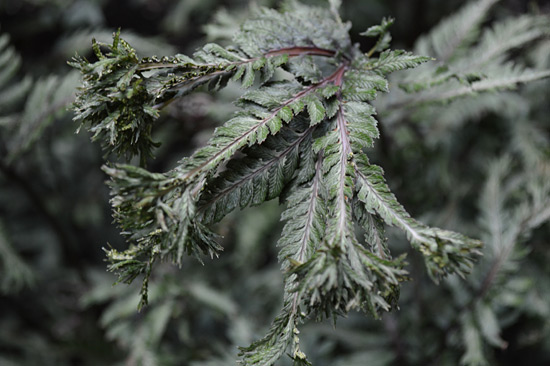
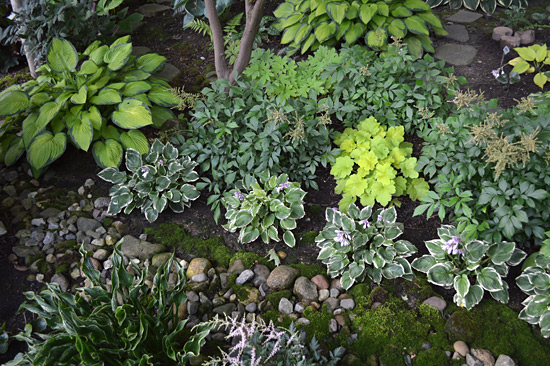
Coming around the out of the shade was this small, sunny bed right in front of the house. Here there were more lilies in bloom and a little veggie patch.
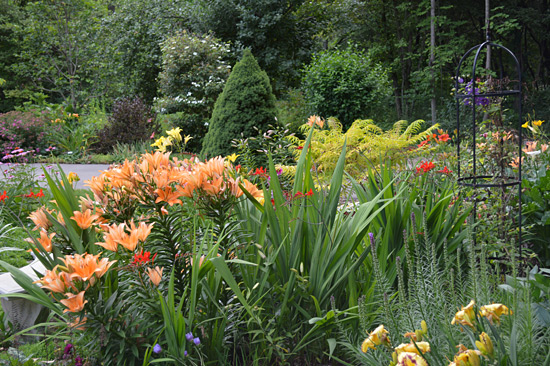
Aren’t these Alium seed heads like little pieces of sculpture? I like the little tier of stones in the backdrop as well.
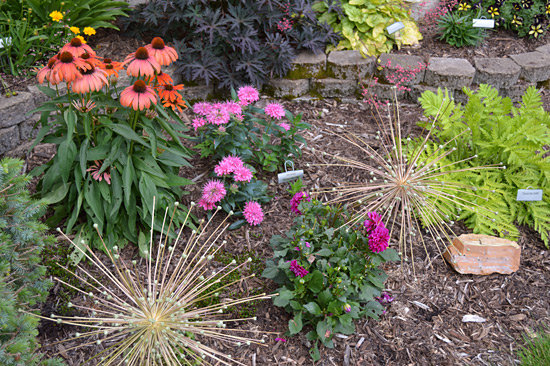
That dark foliage and these colors? *swoons*
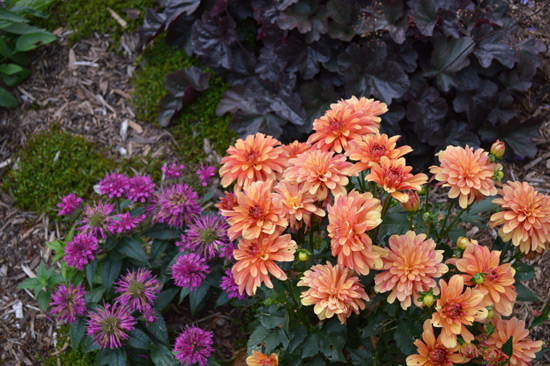
Like its sister bed across the drive, this sunny perennial bed was also a riot of bright colors.
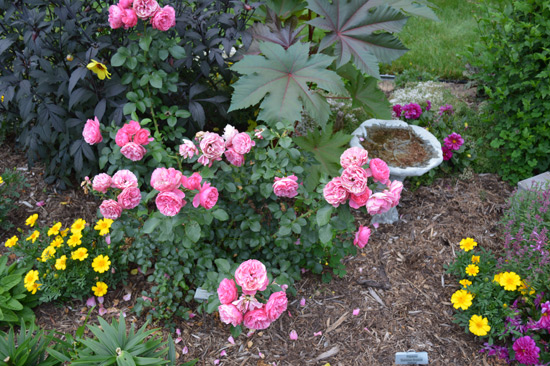
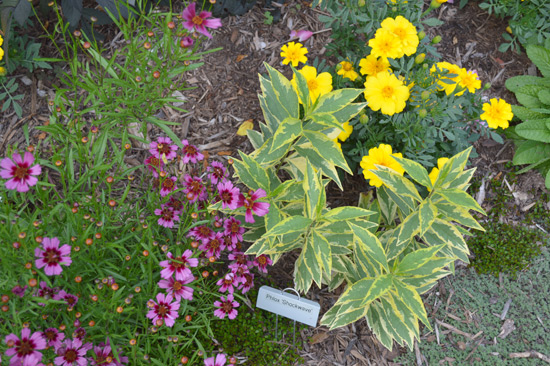
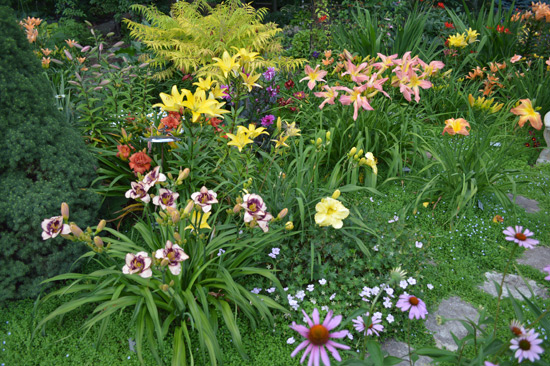
I’m loving the idea of these Open Garden visits. There are so many great, inspirational ideas and the resident gardener is on hand to ask questions. Two more to go this summer!
